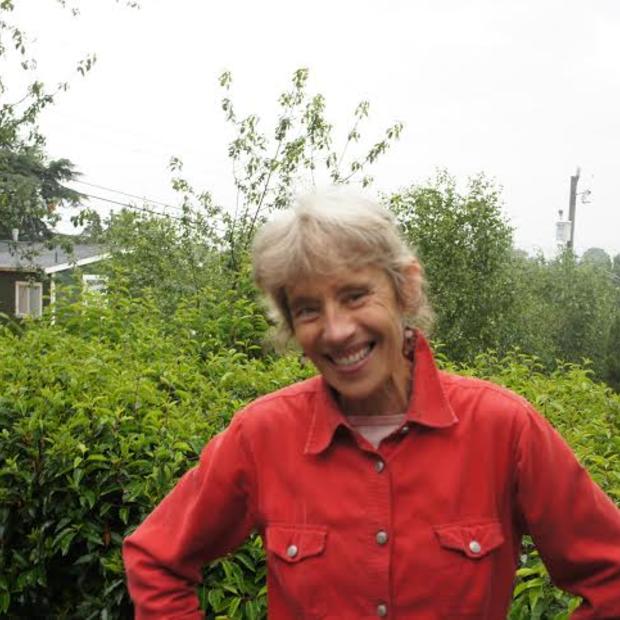The city's dirty little secret, its meandering river cursed by industry and loved by community, has a new ally, Macklemore. In a new billboard campaign that rolled out today, “Riverforall.org," the hip hop artist addresses the public with five simple words, “The Duwamish is our river.”
Launched by the Duwamish River Cleanup Coalition (DRCC), the billboard is a pitched effort to get the city, county, port and Boeing on board with a more rigorous river cleanup. The intent of the billboard campaign, framed in red, white and blue colors that symbolize the Fourth of July, is also to help Seattle residents understand why the health of their hometown river is important.
Some of the river's highly contaminated hot spots have already been cleaned up. But the river-wide cleanup has yet to reach a level where it's healthy for those who live by it and fish from it, says the DRCC.
There is also a significant environmental justice aspect to the cleanup. The South Park neighborhood on the banks of the river is more diverse and poorer than the rest of the city. Residents are also far less healthy. A health impact study released last year, the Duwamish Valley Cumulative Health Impacts Analysis, showed life expectancy in South Park and Georgetown to be eight years shorter than the Seattle and King County average.
Back in 2001, the EPA declared the Duwamish a Superfund site because of high levels of contamination, including PCBs, arsenic, lead and mercury. Since then, the river has been analyzed, dredged and dissected by those on the hook for cleaning it up — primarily the city, the county, the Port of Seattle and Boeing — and those who are pushing for the river's renewal. Many, now including Macklemore, say the river needs a more comprehensive cleanup to become a genuinely a "river for all” and not revert to its contaminated past.

Macklemore's testimonial, which can be found on the Riverforall.org website, says: “We are Seattle. No bridge, boundaries or invisible man-made lines divide us. This is our home, our people and our community. This is our city’s only river, and I want to do my part to make sure that it's safe for all that reside here. I stand in solidarity with community leaders and families who have organized for years to right this injustice.”
As the story was told to BJ Cummings, longtime policy adviser with the DRCC, Macklemore's team contacted the Duwamish River Cleanup Coalition after he and his fiancée returned from a trip to India this spring. (Neither Macklemore nor his representatives were available for immediate comment.) The two of them spent time learning about the Ganges and the special relationship the river holds for its people. When they got back to Seattle, they began to visit their hometown river, to kayak on it and speak with those who live on its banks. And Macklemore vowed to do his part to right the river's historical environmental injustice.
The draft cleanup plan is slated to be finalized at the end of this year. The draft has been commented on by the public and those who are responsible for ensuring the river is cleaned up: the city, county, port and Boeing as well as as Monsanto, which first came out with the class of chemicals called polychlorinated biphenyls, or PCBs, in the 1930s. A few months ago the comments were made public and reveal lobbying by all parties concerned. EPA's draft plan calls for spending $305 million and would clean up an estimated 20 percent of contaminated waste.
The EPA draft plan asserts that full public health protections and safe fish consumption are unlikely. Instead the plan focuses on specific highly contaminated areas rather than the river as a whole. And it calls for a combination of methods to do the job: dredging contaminated sediment, capping it with clean material such as sand, and “enhanced natural recovery,” which involves adding clean material to areas with moderate contamination and allowing nature to take its course.
The DRCC's campaign is to raise public awareness, says Cummings, and encourages the liable parties and the EPA to do more. She praises Boeing's work on one early action plan, saying the company completed one of the cleanest dredges in the country. But the group believes that similar action is needed in the rest of the Duwamish as part of a stronger cleanup plan than either the EPA or the liable parties have sought.
Public comments on the plan run 10-to-1 for more cleanup not less. The DRCC plan calls for spending $500 million. That's double what the liable parties want to spend, but it would still only clean up 38 percent of the river's contaminated area, says Cummings.
“The community is not asking for 100 percent of the toxic waste in the river to be removed,” says Cummings. “They're asking for 38 percent of it to be removed. The rest, we believe, is low enough level contamination that if we lay a thin layer of clean material over it, then its likely to be absorbed and more quickly protect people's health.” This type of cleanup, she adds, can be more easily monitored to see if it erodes over time rather than waiting to see if nature takes its course and covers contaminants. The DRCC has used technical experts in developing its recommendations.
Clear Channel offered the clean up coalition a non-profit discount on the billboard, which went up this morning. Macklemore picked up the remainder of the tab.


